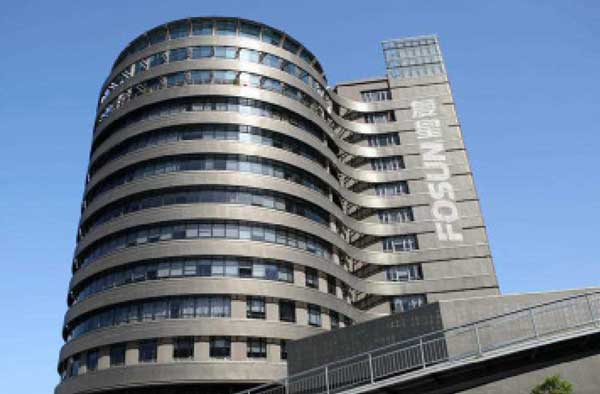12 May 2016 - {{hitsCtrl.values.hits}}

By Paul Hubbard
State-owned enterprises (SOEs) are often thought to dominate the Chinese market, with profound implications for the global economy. The US–China Economic and Security Review Commission stated that ‘Soviet-style, top-down planning remains a hallmark of China’s economic and political system’.
A commission hearing in Washington in February 2016 looked for evidence of ‘state capitalism in the global context’. But while some of China’s SOEs are very large and powerful companies at home, China’s private sector has a bigger impact on the global economy.
China’s share of world manufacturing exports was 5 percent when it joined the World Trade Organisation (WTO) in 2001. This share grew to 18 percent by 2014. China’s export boom lowered prices for consumers around the world and contributed to Asian growth through integration with regional supply chains.
Most things with a ‘made in China’ tag are not made by SOEs. This is largely a private sector success story, catalysed by foreign investment that brought capital and technology to China’s coastal provinces. When China joined the WTO, the SOEs were responsible for just 18 percent of the value of Chinese industrial exports. This declined to 8 percent by 2014. A comprehensive survey of 430,000 Chinese industrial enterprises in 2009 confirms that Chinese industry is dominated by the private sector. Sixty nine percent of revenue for resources, manufacturing and utilities go to sectors in which non-SOEs control the majority of assets. These are mostly highly competitive.
Only 16 percent of industrial revenue goes to markets that are both concentrated and largely owned by SOEs — most significantly oil, electricity and tobacco. These are true state monopolies but they are not unique to China. In many countries oil, electricity and tobacco have been, or in some cases still are, state owned. Other industrial sectors dominated by the SOEs, including steel and coal, are competitive.
But while industry in China is predominately private and highly competitive, China’s largest companies are SOEs. Given China’s state monopolies in oil and electricity, it is not surprising that the country’s three largest companies are two giant oil conglomerates and the national electricity grid. The combined revenue of these three giants in 2013 was US $ 1.3 trillion, which is the same figure as the gross domestic product (GDP) of Mexico.
These are the largest of China’s ‘central SOEs’, so-called because they are supervised by the central government’s State Assets Supervision and Administration Commission (SASAC). The top leaders of central SOEs — the party secretary, general manager and chair of the board of directors, if one exists — are treated as equivalent to high-ranking government officials, appointed and dismissed by the centre.
Central SOEs also dominate telecommunications and transport. Outside the SASAC structure, the central government also owns China’s main banking and finance companies, the tobacco industry, major media and the post office. Altogether these central SOEs, often large business conglomerates with 100s of subsidiaries, took in half of the US $ 9.2 trillion in revenue earned by China’s top 500 companies in 2013. Beneath the central government, provinces own more than 100,000 SOEs, many of which have joint ventures with private capital.
Turning to investment in China and abroad, the SOE share of fixed asset investment in China also fell over the last decade, from 58 to 32 percent. The major sectors where SOEs still dominate investment relate to infrastructure and public utilities. This investment supports Chinese urbanisation and can be conducive to further private sector growth. Investment in manufacturing, which accounts for one-third of fixed asset investment, is 88 percent private.
The combination of a highly competitive, private manufacturing sector with a foreign exchange policy that used to benefit Chinese exporters, has contributed to China’s large trade surpluses. This was one enabler of China’s ‘going out’ policy for overseas direct investment. Chinese overseas investment initially focused on securing the supply of raw materials.
According to the China Global Investment Tracker, 58 percent of large-scale Chinese investment abroad since 2005 was in energy and metals. Of this investment, 80 percent has come from central SOEs that also dominate these sectors in China’s domestic industry. According to the former head of the SASAC, central SOEs account for 70 percent of Chinese non-financial investment abroad.
But resource investment is slowing, opening the way for more non-state players. According to a KPMG–University of Sydney database, in 2014 a surge of private investment into commercial real estate saw Chinese non-SOE investment exceed SOE investment in Australia for the first time. Chinese private sector investors made up 48 percent of total value and 78 percent of total details according to a recent update.
The prominence of SOEs in multi-million and even billion dollar, investment deals overseas, raises concerns about the global spread of Chinese ‘state capitalism’, even as SOEs’ share of the Chinese economy is declining.
Advanced economies, including the United States and Australia, have a deep national interest in engaging with SOEs, not just to access capital. Foreign engagement with SOEs provides an opportunity for Chinese state business to experience and be subject to the discipline of competitive markets, without special privileges, in well-regulated economies.
Foreign investment into China helped align China’s nascent private sector with the rules of the global trading system. Likewise, Chinese state investment overseas can be a channel to take back to China international standards for transparency, corporate governance and market behaviour. (Courtesy East Asia Forum)
(Paul Hubbard is a Sir Roland Wilson PhD Scholar at the Crawford School of Public Policy, The Australian National University. This is adapted from his testimony before the US–China Economic and Security Review Commission in Washington DC on February 24, 2016. He is currently on leave from the Australian Treasury. The views expressed here are his own and do not reflect those of the Treasury)
29 Nov 2024 1 hours ago
29 Nov 2024 2 hours ago
29 Nov 2024 3 hours ago
29 Nov 2024 3 hours ago
29 Nov 2024 4 hours ago